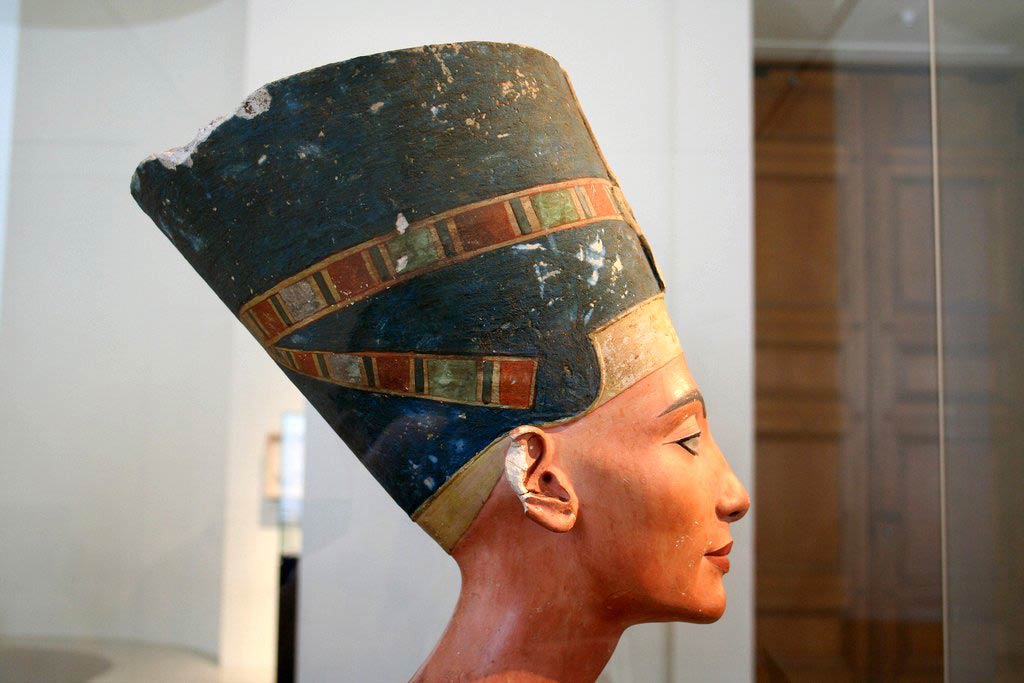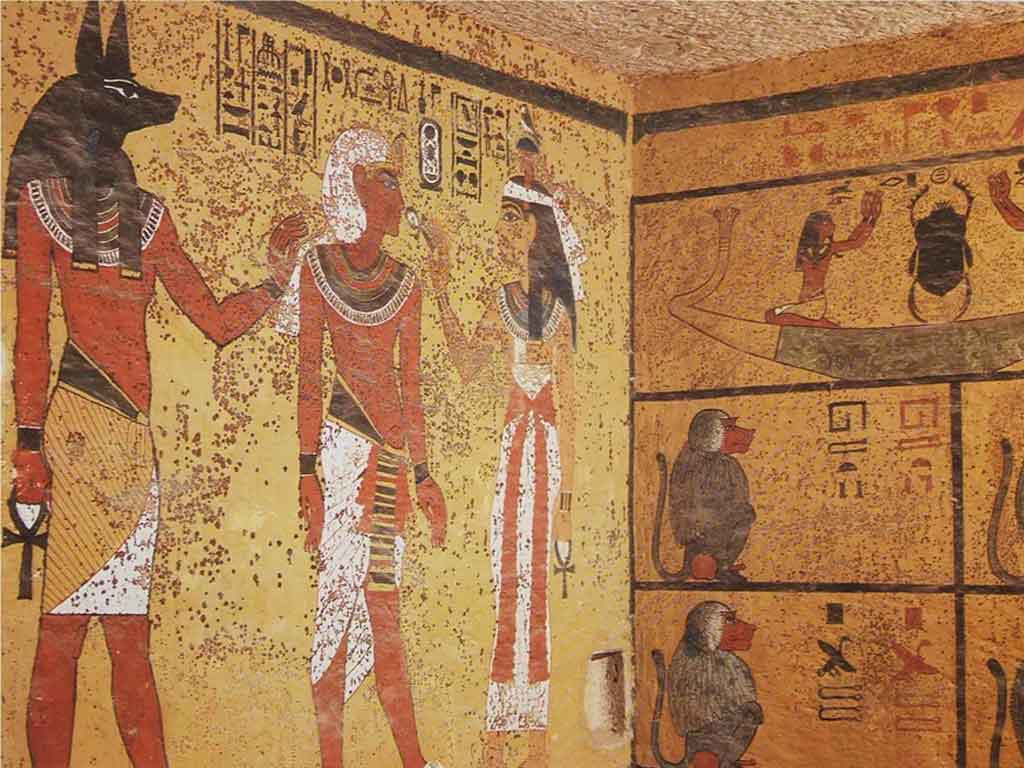In November 1922, somewhere in Egypt’s famous Valley of Kings, archaeologist Howard Carter descended the steps of a formerly unknown chamber. When Carter announced that he had actually stumbled upon the mummy of Pharaoh Tutankhamun, Egypt’s famous boy-king who died prematurely, the world went into a frenzy. Never before had the rest of the world been so keen to know about the secrets and mysteries of this exotic Middle-eastern nation.
Carter’s discovery ushered in an era of increased research in Egypt’s ancient history and gave birth to a new field of expertise known as Egyptology. Now, in 2015, Nicholas Reeves, a University of Arizona archaeologist claims he has the answers to Egypt’s biggest enigma. In his upcoming visit to Egypt in September, Reeves plans to prove his hypothesis about the final resting place of a certain Egyptian royal figure who has been eluding archaeologists for ages.
If Reeves does succeed, his discovery would be phenomenal; perhaps even greater than that of King Tutankhamun’s. Only this time, it would be a woman and her name is Nefertiti.
Who was Nefertiti?
Nefertiti was one of Egypt’s most popular (read ‘notorious’) and powerful queens. Historical evidence suggests that Nefertiti, whose name means “the beautiful one has come”, was probably the most beautiful woman that ancient Egypt ever witnessed. Her exotic pulchritude is often linked to foreign origins, but little is known about her parentage.
Nefertiti appears in historical texts and paintings for a very brief period of time, mostly in accounts describing her as the Royal wife of Pharaoh Akhenaten.
Then suddenly, with the end of Akhenaten’s reign, Nefertiti inconspicuously vanishes too.
Details of her death and burial are vague, but what is concrete is the huge impact that this woman left on Egyptian history. In hieroglyphic texts, in stone inscriptions, depicted on walls of temples and tombs more often than any other Egyptian queen- her name is eternalised in history like footsteps imprinted on wet cement. Mention Nefertiti in a room full of history buffs and a heated discussion is guaranteed.
But, what exactly did Nefertiti do that makes her such a rage, even 3,300 years after her death?
Nefertiti’s Story
I first stumbled across Nefertiti in one of Michelle Moran’s historical fiction novels. A few google searches, a couple of YouTube documentaries and I was obsessed with her story.
The Beginning: Birth of Atenism
Nefertiti and her husband Amenhotep IV ruled over Egypt in mid-1300 BC. At that time, Egypt was a polytheistic society with a long hierarchy of Gods and Goddesses. The radical royal couple, however, had altogether different ideas.
In the fifth year of their reign, Amenhotep IV and Nefertiti introduced Atenism- a religious cult that worshipped the sun God Aten – and proclaimed that it would be Egypt’s new religion.
To emphasise his absolute loyalty towards Aten, the Pharaoh even changed his name from Amenhotep to Akhenaten (meaning ‘spirit of the Aten’). This sudden change in religious traditions brought frowns to many faces, especially the high priests who were rendered powerless by this new regime. The royal couple started making a lot of enemies.
The Middle: Rise of the Heretics

As years passed, Akhenaten’s devotion to Aten turned to fanaticism. He declared that Aten was not only the supreme God but also the only God that Egyptians could worship.
Stripped of their right to worship traditional Gods, Egyptians soon had a serious falling out with the royalty. The royal couple came to be associated with a new term- ‘Heretics’.
The End: Sunset
However, in the 17th year of his reign, Akhenaten died mysteriously. At this point, history becomes murky. With a dead husband and a hostile kingdom confronting her, Nefertiti found herself between a rock and a hard place. Some historical evidence suggests that after her husband’s death, Nefertiti ruled over Egypt ‘on behalf’ of Akhenaten.
After Akhenaten, the next man in line to ascend the throne was his son Tutankhaten, a mere boy of 8 or 9 at that time. Tutankhaten changed his name to Tutankhamun to honour the traditional God ‘Amun’ and obliterated his father’s extremist cult. At a tender age, Tutankhamun shouldered the responsibility of undoing all the changes that his father Akhenaten had attempted to inculcate.
Atenism had faded into nothingness; the sun had set in Egypt.
Since Akhenaten was no longer alive, Nefertiti alone had to bear the brunt of Egypt’s hatred. What happened to her in the next few years is a tangle of theories and conjectures. It seems as if Nefertiti, for no reason, suddenly ceased to exist.
What happened to her? How did she die? Where was she buried?
Quest for the Queen

In 2003, University of York archaeologist Joann Fletcher was certain she had exhumed Nefertiti. Fletcher had discovered three mummies hidden in a concealed chamber near a famous tomb in the Valley of Kings. One mummy, in particular, caught her fancy.
The mummy in question had been defiled- the mummy’s mouth was a big, ugly hole- as if it had been hit deliberately by a blunt object.
According to the Egyptian Book of the Dead, damaging the mouth in this way would imply that the mummy would be unable to speak its name and hence would be trapped between the two worlds forever. Now, whom did the Egyptians hate so much as to condemn their soul to eternal damnation? Ring a bell?
Fletcher thought so too. Apart from this, Fletcher also discovered that the mummy had physical features similar to Nefertiti: double-pierced earlobes, marks of a tight headband (the type only Pharaohs wore) on the skull and a Nubian wig (a style characteristic of royalty during Nefertiti’s times) found nearby.
Fletcher’s theory is tempting; but it’s just that, a theory. Without concrete evidence, we’re forced to turn away from the mummy and just shrug. We cannot say for sure.
It all comes back to Tut’s tomb

Looking at some high resolution photographs of King Tut’s tomb, Reeves noticed two ‘ghost-doors’ staring at him from the west and north walls, indicating that the there was an empty space behind them instead of solid stone.
Earlier in 1922, when Carter first discovered the tomb, as ecstatic as he was, he was also struck by the anomaly of the tomb’s architecture. Everything from the tomb’s alignment to the haphazard manner in which it was stocked suggested sub-standard royal status. It looked as if Tutankhamen had been hastily put to rest in a makeshift tomb.
Reeves quickly pieced the two puzzles together and points out that if the space behind the north wall is indeed a burial chamber then it would all make sense- the tomb would be orientationally fit for a Queen.
But what makes Reeves think that Nefertiti is hiding behind that wall?
A painting that lies

On the north wall, there is a depiction of a dead Pharaoh being prepared for the afterlife by the new Pharaoh. The accepted theory is that the dead Pharaoh in the painting is King Tut and the other one in King Ay (who is also interestingly believed to be Nefertiti’s father), his immediate successor. This, Reeves points out, is a gross misconception.
The painting might have been modified later by those who wanted the world to think it was King Tut’s tomb. The figure believed to be king Tut is actually Nefertiti- and indeed, the figure does look like a woman who was made to look like a man since she was the Pharaoh.
The other figure most certainly cannot be Ay, who was quite elderly by this time. The figure shows a young person with a strikingly boyish face. This is king Tut who is preparing Nefertiti, the dead Pharaoh for an afterlife. The painting clearly says that the tomb did not originally belong to King Tut; he was just a later addition.
The tomb belongs to the dead Pharaoh depicted in the painting. The question is: is it Nefertiti?
Is Nefertiti in Tut’s Tomb?
As Reeves’ visit to Egypt draws closer, the suspense crescendoes. The woman who changed Egypt’s history has been missing for more than 3,300 years. The quest for Egypt’s mysterious beauty brings us back to where it all started- KV62, King Tutankhamun’s tomb.
Is there more to KV62 than what Carter discovered almost a century ago? Will the saga of Egypt’s most powerful woman end here?










